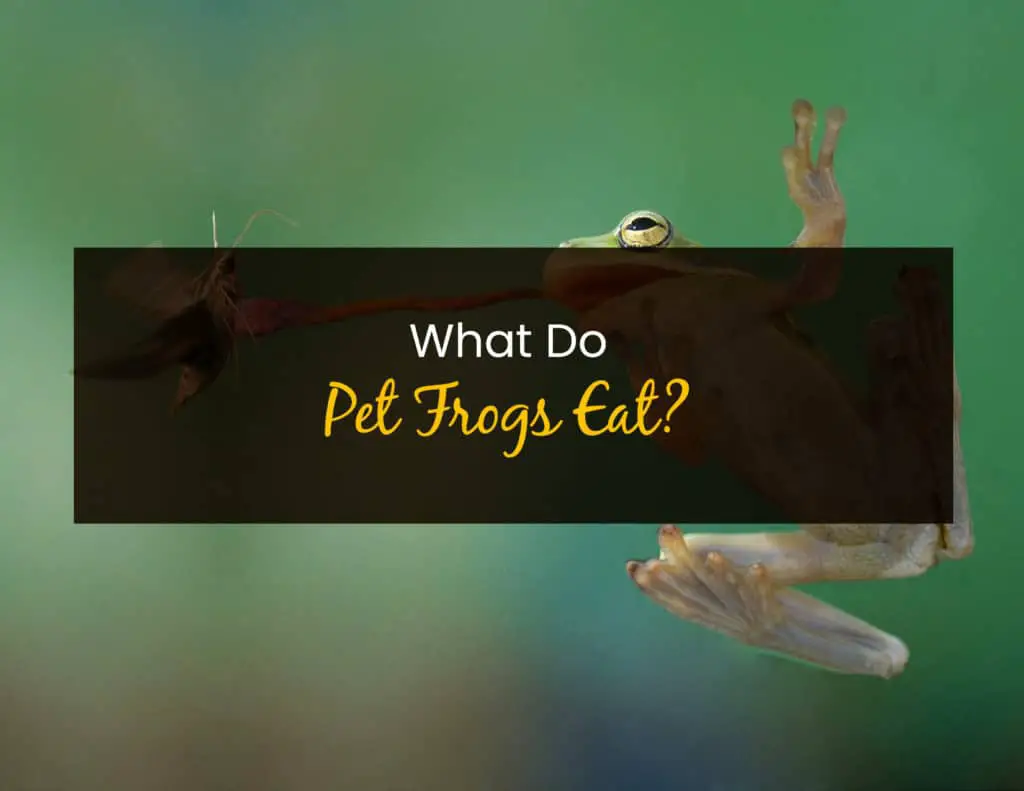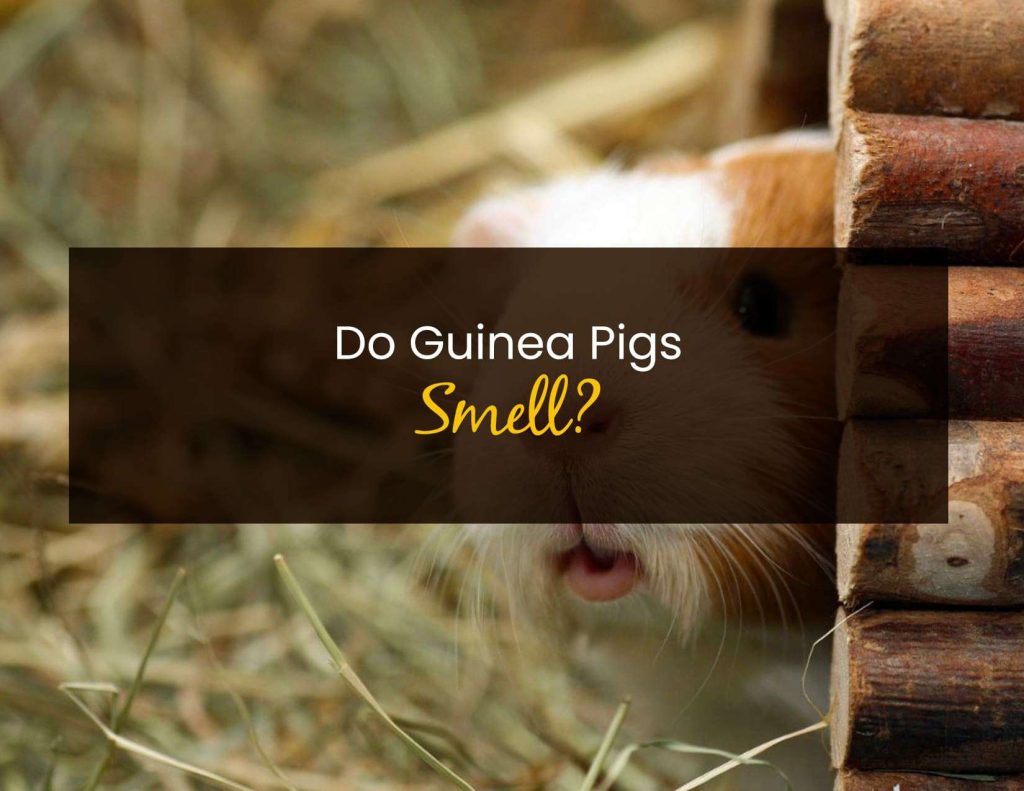Before you bring a new pet into your home, you must research and prepare for that pet. In this guide, we will be going over all of the details you need to know about having a pet frog. With that said, what do frogs eat?
Frogs in the wild are natural predators and only eat live insects and other invertebrates. With that said, feeding pet frogs is a little more complicated than buying a bag of food that you can dump in their food bowl. Furthermore, the larger your frog, the more you will need to feed them. However, a larger pet frog comes with a more extensive range of prey that you can feed them. Below we will give you a list of feeder insects and other prey you can give your frog. They will be ordered from easiest to obtain to the hardest.
- Crickets
- Mealworms
- Waxworms
- Superworms
- Earthworms
- Caterpillars
If you have a large frog species, you can feed them mice or even small feeder fish. If you happen to have an aquatic species of frog, then bloodworms, brine shrimp, and black worms will make up most of their diet.
As you continue to read this article, we will give you an in-depth guide on feeding your pet frogs. This feeding guide will cover what is best to feed your frog, how often you should feed them, and the best way to feed your frogs. Furthermore, we will give you a comprehensive guide on how to prepare a terrarium for your frog.
What Do Pet Frogs Eat?

Frogs in the wild are predators with a flexible diet. In a sense, frogs are not picky eaters and will eat just about anything that comes into their sight that looks remotely appetizing. Wild frogs will eat spiders, crickets, grasshoppers, locusts, butterflies, roaches, worms, or anything they can fit in their mouth. Like a Pacman frog or an African bullfrog, some of the larger frog species can eat mice. Furthermore, the more aquatic frog species like the American dwarf frog and clawed frogs will be happy eating small feeder fish and other aquatic prey.
Each frog species will have its requirements to meet its nutritional guidelines. However, in general, your pet frog will eat a mix of the following feeder prey.
- Waxworms and Mealworms. These worms are a tasty treat for your pet frogs. They are effortless to find in most pet stores and can be raised at home with little to no hassle. You can also purchase these worms from bait stores if you need to; however, they are not gut-loaded.
- Crickets. Feeder crickets are the most accessible food to come by, and nearly all pet stores will have them. Feeder crickets will most likely be the primary source of food for your pet frog. However, these feeder crickets are not the healthiest choice and tend not to have a lot of nutritional value. With that said, you can increase their nutritional value by coating your feeder crickets in vitamin and supplement powder before feeding them to your frog.
- Grasshoppers and Locusts. These feeder insects are packed with nutrients that are essential for your frog. However, they are much harder to find in pet stores than the previous entries on this list. With that said, if you can find a pet store that sells feeder grasshoppers or locusts, they will make for an excellent meal for your frog. Furthermore, you can also look for feeder breeders, who breed feeder animals like all of the entries on this list.
- Dubia Roaches. Dubia roaches are super feeder insects that are packed with tons of nutrients that your frog will need. While dubia roaches are not commonly sold in pet stores, they tend to be one of the more popular choices for feeder breeders.
- Mice. Mice are a fantastic source of food for larger frog species like the African bullfrog and Pacman frogs. As your frog grows, you will need to start feeding them pinkies or baby mice. Bigger frogs will happily eat juvenile or adult mice. Mice are almost needed when caring for larger frog species because of prices. The number of insects you will need to purchase to feed large frogs will be more expensive than buying one mouse every week. You can purchase mice either live or frozen; however, most frogs will not eat frozen prey and prefer for them to be alive.
- Brine Shrimp, Blackworms, and Bloodworms. These will be their primary food source if you plan to own an aquatic frog like a clawed frog or an American dwarf frog.
Something to remember, always feed your frog food that is not bigger than its head. Doing so will prevent your frog’s intestines from getting impacted. Also, try purchasing gut-loaded prey for your frog whenever possible.
Gut-loaded means to pre-feed prey before using them to feed larger animals. Gut-loaded prey is much more nutritious for your frogs. Furthermore, most people will dust insects with vitamin and supplement powder to ensure that their frogs are getting everything they need. If you plan on breeding your own feeder insects for your frogs or other reptiles and amphibians, dusting and gut-loading them will provide excellent results and keep your frogs and other reptiles and amphibians happy and healthy.
Avoid feeding your frogs wild insects, mice, or worms. These wild creatures pose a severe health risk for your frog by giving your frog pesticide exposure, which can be deadly.
How Much And How Often Should I Feed My Pet Frog?
Your frog’s feeding schedule depends on a few factors; species, age, and activity level. Just like most animals, frogs can become obese if they are overfed. With that said, you must feed your frog the right amount to keep them healthy.
- Froglets, young frogs, and energetic frogs like dwarf frogs will need to be fed more often than other frogs. Froglets and high-energy frogs will need to have frequent access to their food. In most cases, owners will keep a decent supply of live crickets in their frogs’ cages. These crickets are often pre-coated with vitamin and supplement powder and will also have a few veggies in the cage so they can eat while waiting for the frog to eat them.
- As your froglet grows, they will need less food, less energetic frogs will also need to be fed less often. In general, these frogs will need to be fed around five to six crickets each meal. Furthermore, these frogs will need to eat once a day or every other day.
- The larger frog species will need to be fed less often. You will need to feed your large frogs around eight to ten crickets a meal. You will need to feed them every other day at most; every three days is more likely to meet your frog’s nutritional needs. The more giant mice eating frogs will need to be fed once a week or every two weeks.
Along with feeding your frog, they will need constant access to clean and dechlorinated water. You can purchase dechlorinated water at nearly every pet store. When taking care of your pet frog, you will need to either place a water dish filled with water or mist the enclosure. Doing both is the best option but is not needed unless you have a frog naturally living in a very humid climate.
Making sure your frog has ample amounts of water is vital for their health and keeping them hydrated. Frogs and toads do not drink water through their mouths. Instead, they absorb water through their skin to stay hydrated. With that said, make sure that the water dish for your frog is not too deep, but deep enough that the water can cover at least half of your frog’s body when they sit in their dish.
As previously stated, each frog species is unique and will require a specific amount of different nutrients to stay healthy. With that said, do a little research about the specific frog breed you are interested in keeping. Also, be on the lookout for what insects to feed them and how often.
How To Set Up A Cage For Pet Frogs And Toads
In this part of our caring frog guide, we will be discussing how to properly set up a cage for your pet frogs and toads. The cages we will be setting up are for land barring frog and toad species. Nearly all toad species will live comfortably, whereas only most frog species are suitable for this type of habitat. However, we will give you examples of what to do for some other frog species that require some additional humidity.
Keep in mind that this is a general approach for constructing a basic terrestrial frog enclosure; it is not intended for a single species of frog because each has unique requirements. For example, American toads, Pacman frogs, and Tomato frogs would fit beautifully in the design below. Still, if you were making an enclosure for an Asian horned frog, you may want to add a drainage layer and extra leaf litter.
Setting Up The Tank For Your Frogs and Toads
We used an Exo Terra terrarium in this design, but you could use an ‘aquarium’ or breeder tank instead. It’s difficult to say which is superior and what size you require. It all boils down to the species you’re maintaining and how many you have.

Most keepers recommend at least 10-gallons per frog as a general guideline. This implies you’ll need a 30-gallon tank to house three frogs in one habitat. While you may house tiny species like Red Belly Toads in a smaller cage, Pixie Frogs require a bigger enclosure. The species determine the size of the animal. Anyway, here’s how to make a cage for terrestrial frogs and toads without delay.
Step 1: Picking The Right Enclosure
The first step is to select a cage. A simple glass tank or aquarium is both practical and affordable. The contents are what distinguishes an aquarium from a terrarium. An aquarium is a glass tank that contains water, but a terrarium is a glass tank that contains substrate, plants, and ornaments. Now that we’re on the same page, I’ll show you two excellent toad cage terrariums.
If you want to take things a step further, we recommend an Exo Terra terrarium. These terrariums, which are designed exclusively for reptiles and amphibians, include front opening doors that offer you access to the inside. There are air vents beneath the doors that allow fresh air to circulate. They feature locking screen lids with unique openings for putting wires or hoses through the top. The majority of them come with foam backdrops that look wonderful while also concealing wires and hoses.
Step 2: Cleaning Your New Terrarium
It would be best if you cleaned your frog’s new enclosure after you’ve purchased and unwrapped it. Use paper towels and distilled water. Cleaning items that contain chemicals should be avoided since they can damage amphibians. Our sole purpose is to clean any dust that has developed on the glass since you bought it.
Step 3: Adding The Substrate
The substrate is usually added to the terrarium next in most installations. Most amphibians benefit from coco-husk fiber substrates such as eco earth and plantation soil. Soil, vermiculite, and sphagnum moss mixtures can also be used.

Many frog species like to burrow. So, if you are getting a frog species that likes to burrow, be sure to add three to four inches of the substrate; otherwise, two inches of the substrate is perfectly fine.
Step 3 Part 2: Drainage Layers
If you are keeping a frog that requires high humidity levels, then adding a drainage layer under the substrate is a requirement. Due to the high levels of humidity required for some frog species like the aforementioned Asain horned frog, there will be a lot of water involved in their habitat keeping. The drainage layer helps prevent the substrate from getting soggy and eventually moldy.
To set up a drainage layer, fill the bottom of the cage with either hydro balls or a metal filter. Hydro balls are easier to use, but we prefer matala filters. If you use a matala filter, you will need to cut it down to size so that it fits snug at the bottom of the cage. If you are going to use hydro balls, fill the bottom of the cage until it is completely covered.
Once you have your filter or hydro balls covering the cage floor, you can add the appropriate amount of substrate for your desired frog species.
Step 4: Give Your Pet Frogs or Toads Some “Hides”
Hides are a great addition to any reptile or amphibian cage. They give your pets a nice place to retreat to feel safe or sleep. To create a hide for your frogs or toads, you can use a hollow log, cork bark flats, and benches. Once you have chosen your preferred hide, bury it slightly into the substrate. Doing so will allow your frog to feel more protected.
Step 5: Water Dish
A water dish is essential for your frog’s habitat. They will need a bowl or dish large enough for your frog or toad to climb into so they can soak in their water easily. The water should be shallow enough that your frog will not have to swim but deep enough that it will cover close to half of its body when they sit in it.
Step 6: Plants And Other Decorations

You can skip this step if you do not want to add extra clutter to your frog’s cage. Using fake plants is the easiest way you can decorate your frog’s cage. You can use fake leaves to use as leaf litter on top of the substrate. You can also place whole fake plants into your frog’s cage if they are strong enough so your frog can not easily knock them over.
Using real plants is a lot more complicated and can be a tedious process. If you plan on using real plants, be sure to replace the soil and thoroughly clean the plant before placing it into the cage. Furthermore, it would be best if you kept the plant in its planter or pot to prevent burrowing frogs from damaging the roots. You will also need to supply a low-power LED grow light to supply your real plants with the light they need while also not heating up your frogs cage.
Step 7: Misting
Once your frog’s new home is set up just the way you like it, you will need to give it a thorough misting. Misting is important for some toad species but is not needed for all of them. However, it would be best if you always misted your frog’s enclosure to keep the humidity at an appropriate level for them.

Misting helps keep the substrate moist and increases the humidity inside of the cage. If you are keeping a frog that requires high levels of humidity, then you will need to mist their cage every one to two days. For most other frog species, misting their cage every 3 to 4 days is best.
Final Thoughts
Frogs are popular pets and come in a wide variety of sizes and colors. With that said, feeding frogs is more difficult than most other common pests. They require specific nutrients that can only be provided through certain insects. Furthermore, some of the insects needed to feed your frog are not readily available at most pet stores. However, you can coat the insects you do find in frog vitamin and supplement powder.
With that said, we hope that our frog feeding guide taught you everything you need to know about feeding your frog. We also hope that our guide to help you set up your frog habitat helps keep your frog happy and comfortable throughout its life.










